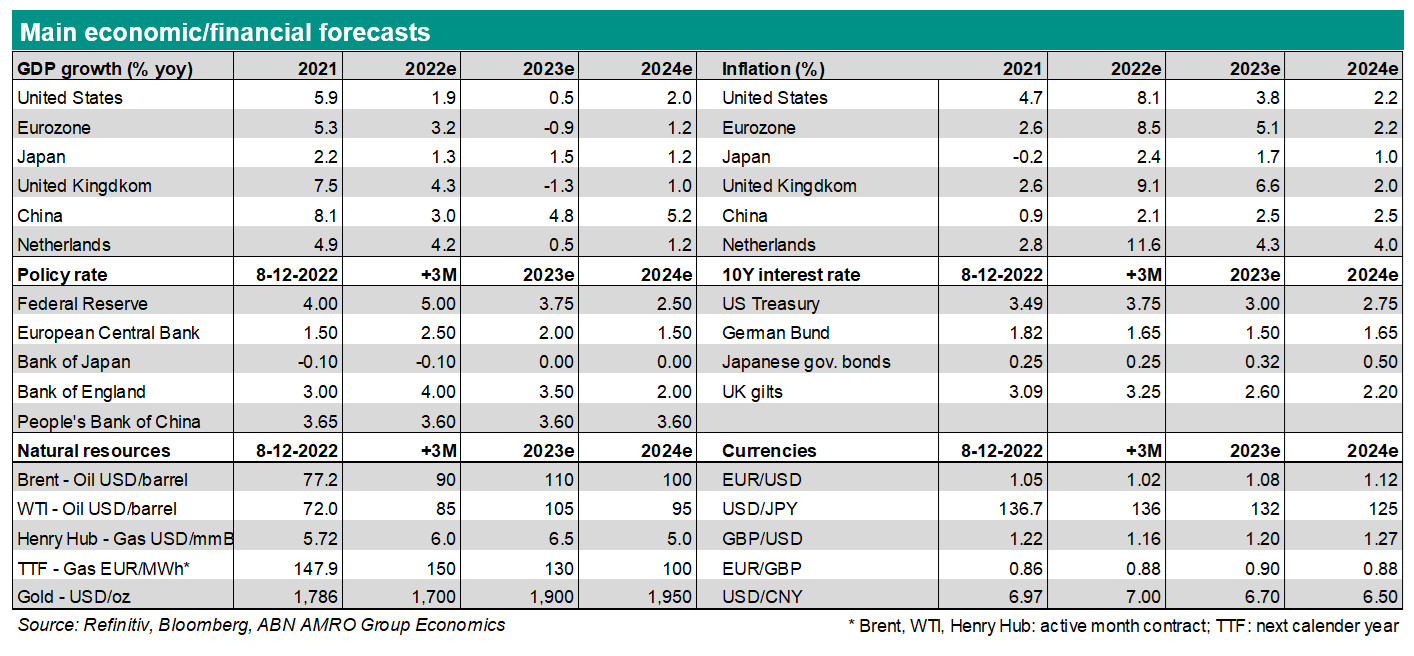Introducing our global supply bottlenecks indicator

Global supply bottlenecks in manufacturing and trade have been a key headwind in the recovery. We created a comprehensive indicator measuring the severity and direction of these bottlenecks. Some easing seen in late 2021, but Omicron could delay normalisation in supply-demand imbalances.
Global supply bottlenecks in manufacturing and trade have been key headwind in the recovery
Widespread pandemic-related disturbances in global production and trade networks have proven an important headwind to the global ‘post-pandemic’ recovery. They also have added to inflationary pressures, although aside from in the US, the spike in energy prices has been the dominant driver of inflation. These bottlenecks stem from pandemic-related temporary closures of production and handling facilities, and from disturbances in global transport (eg closure of port terminals, port congestion, spike in freight tariffs). The supply issues are only in part a global phenomenon: the interconnectedness in global supply chains has created vulnerabilities for disruptions in the cross-border logistics of industrial supplies. They partly also reflect domestic developments (eg. country-specific covid-19 policies or supply shortages in labour markets).
Launching an indicator to measure global supply bottlenecks
To get a sense of the combined impact of these bottlenecks, we developed a comprehensive indicator measuring the severity and the direction thereof. Our indicator captures shortages in semiconductors (lead times), disturbances in global trade (container freight tariffs, Baltic Dry Index) and bottlenecks in manufacturing and electronics (global PMI manufacturing subindices for delivery times and backlogs). As supply bottlenecks have gone hand in hand with demand pressures (reflecting a pandemic-related shift in global demand from services to goods), we use the ratio between the global manufacturing PMI output sub-index versus orders (domestic and exports) as well – also see here. Most variables used in the indicator have a global coverage; the only two exceptions being the PMI sub-index for delivery times and the output versus order ratio, for which we use the aggregates for developed economies (end-users in global supply chains). We think that this indicator helps provide a big picture overview of supply bottlenecks that are currently at play at the global level. The index does not include variables related to domestic issues such as congestion in specific ports, or labour supply. Nor does it capture variables related to the scarcity in commodity markets, which can be volatile and idiosyncratic in their drivers.

Some signs of easing seen in late 2021, but Omicron likely delays a further easing of supply bottlenecks
Our indicator suggests that global supply bottlenecks started easing a little in late 2021, driven by output versus orders ratio (also see our analysis ) and the volatile Baltic Dry index. However, some variables such as the lead times for chips (determined by more factors than pandemic disturbances) are still at historic highs. We expect a further easing of supply-demand imbalances in the course of this year as we reach the end phase of the pandemic, with global demand for goods hit by inflation and rotating back to services. However, the spread of Omicron will likely delay this normalisation process. The gradual shift amongst globally operating firms from ‘just in time’ to ‘just in case’ will also have an impact over time, as firms diversify supply chains to ensure security of supply. This will likely lead to higher inventory levels in the longer run.
